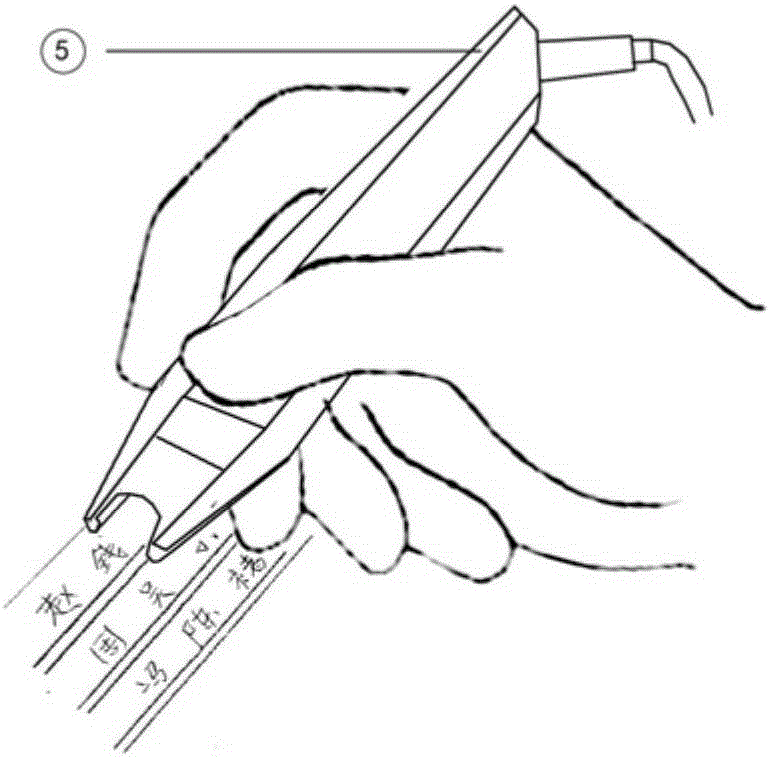Bump Braille pronunciation reading and self-learning method
A braille and bump technology, which is applied in the field of devices for helping blind people to read and self-learn Braille, can solve problems to be improved and improved, and achieve the effect of reading aloud and enhancing interest.
- Summary
- Abstract
- Description
- Claims
- Application Information
AI Technical Summary
Problems solved by technology
Method used
Image
Examples
Embodiment Construction
[0026] The present invention will be described in detail below in conjunction with the accompanying drawings, but it should be pointed out that the implementation of the present invention is not limited to the following embodiments.
[0027] See Figure 1-Figure 4 , a raised-dot Braille pronunciation reading and self-study method, through the Chinese character raised-dot Braille reading paper composed of raised-dot Braille 3, common Chinese characters 1 and Hanvon scanning pen 5 guide lines, combined with Hanvon scanning pen and pronunciation device; the specific implementation method is as follows :
[0028] The raised dot Braille 3 arranged in rows is printed on the paper by a braille printer, and ordinary characters 1 are printed correspondingly on the top of each raised dot Braille 3, and convex ridged lines are printed below the ordinary characters 1 arranged in rows by a braille printer ;
[0029] The common Chinese characters 1 and the raised dot Braille 3 have a one-...
PUM
 Login to View More
Login to View More Abstract
Description
Claims
Application Information
 Login to View More
Login to View More - R&D
- Intellectual Property
- Life Sciences
- Materials
- Tech Scout
- Unparalleled Data Quality
- Higher Quality Content
- 60% Fewer Hallucinations
Browse by: Latest US Patents, China's latest patents, Technical Efficacy Thesaurus, Application Domain, Technology Topic, Popular Technical Reports.
© 2025 PatSnap. All rights reserved.Legal|Privacy policy|Modern Slavery Act Transparency Statement|Sitemap|About US| Contact US: help@patsnap.com



